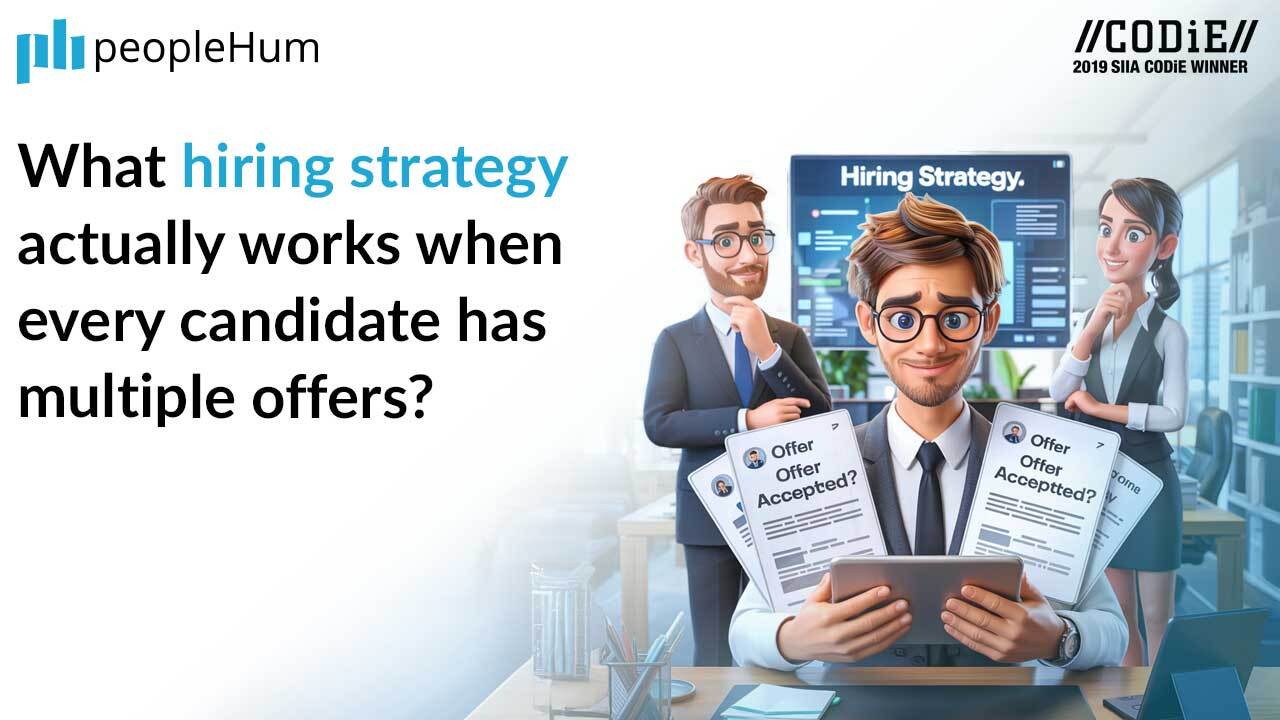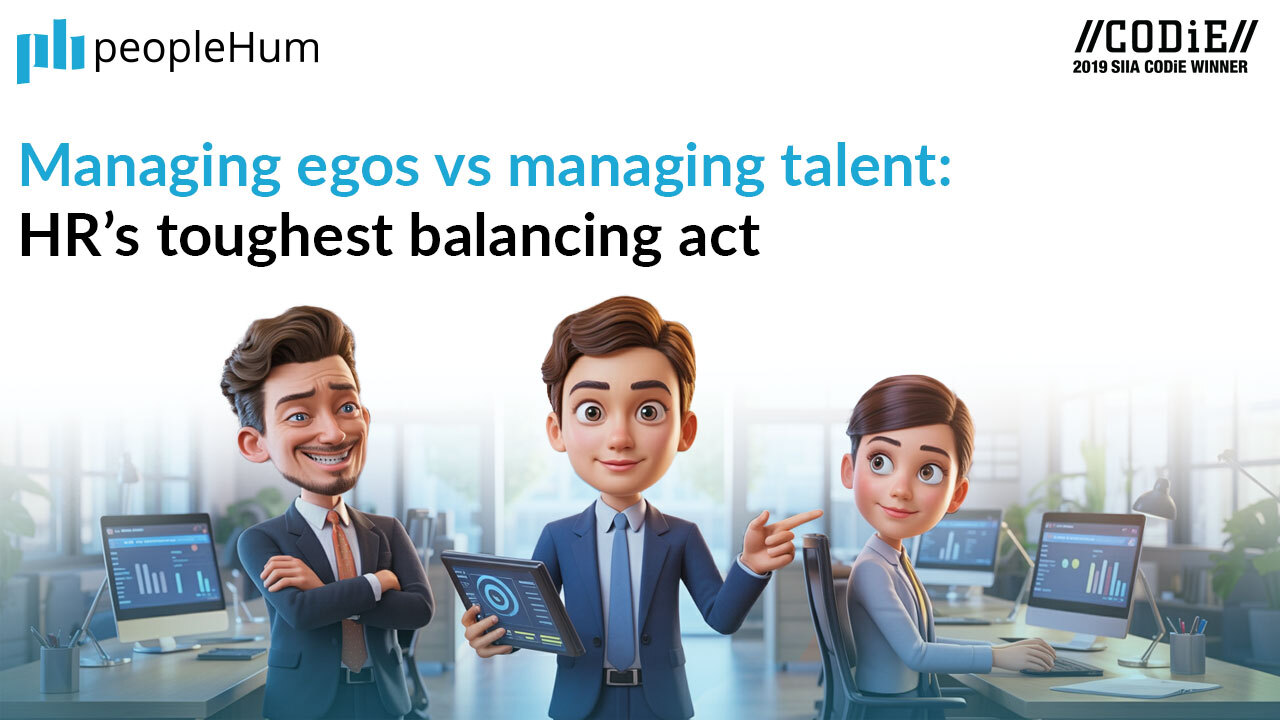"Employees are a company’s greatest asset – they’re your competitive advantage. You want to attract and retain the best; provide them with encouragement, stimulus and make them feel that they are an integral part of the company’s mission." – Anne M. Mulcahy
Efficiently Investing in Human Capital
Productivity and profitability of an organization depend largely on the human capital it is made of. Therefore, investing in human capital is of utmost importance for any organization to thrive.
It is crucial that you maintain the degree to which you invest in them, in all stages throughout the employee lifecycle. In this blog, I would like to walk you through different stages of an employee lifecycle, and the mistakes that are likely in each stage.
1. The hiring mistakes
Investing in human capital begins when you interview your candidates. The energy, time and money spent on an interview have to be put to best use when you select someone for your firm. Nowadays, companies go to the extent of creating a candidate persona to attract the talents that they desire.
The first mistake likely to be made while deciding to hire for an organization is that they ignore the possibility of hiring interns. The potential pool available to hire for a job later is missed here. Hiring talent clones is the second mistake that you can make while recruiting.
The person who left the organization might have great skills in one area, but hiring another person with the same set of skills is not effective. Searching for diversity is the best thing to do, as it helps in increasing innovation. The only thing that matters would be their cognitive ability.
Organizations that make it a point to not select a talent clone, are prone to another mistake - not testing their compatibility well enough. Questions like, “How do you like to be managed?” or “What do you least like about your job, and why?” can be asked to check if he’s compatible with the organizational culture you have.
If hiring is done right, then the first installment of your investment in human capital is well spent. Be sure to trust your instincts. One last tip - Hire someone who can be successful if the roles are reversed.
2. The engagement mistakes
Once you hire an employee, then you want him to work hard and improve results & grow. I cannot stress the importance of engaging him effectively to achieve this. Investing in a good employee engagement action plan is a very smart first step.
But, if your plans have endless surveys to drown your employees, then you’re mistaken. Surveys can be tiring and boring when the employees have to fill answers to the same set of questions every single month, or even different sets. Your workforce includes different generations of people. Make all of them equally comfortable, not equally uneasy.
Most employee engagement strategies ignore the generational gap present within your workforce. A one size fits all engagement strategy can be devised, but be mindful of generational gaps, when you do so.
Any such strategy should evolve over time by measuring, customizing and sustaining. Else, all the investing in human capital that you made until now may go to waste.
The greatest mistake any organization can make is to try to buy engagement - paying employees extra, to keep them engaged. These are companies that got the idea of investing in human capital wrong. Increased financial perks for the sake of buying employee engagement may be counterproductive.
Perks never hurt anyone, but pushing an employee deep into their comfort zone may achieve quite the opposite of your intent. It is human nature to want more compensation, but if this is implemented in haste, or without the right intent, it leads to losses in the long run, for both the organization and the human (employee).

3. The nurturing mistakes
Now, this is the place where you invest the most. Nurturing your assets, your employees are very essential to keep the system going. Different organizations have different takes on how to nurture their employees.
Some organizations even pay for tuition for their employees. However, the concept of nurturing an employee comes down to how effectively the leaders choose to do it. Let’s take a walkthrough of the common mistakes made.
The first mistake to avoid is hiring a non-competent leader. In fact, it is the only mistake you need to avoid, as the rest of the mistakes are made by leaders themselves. The mistakes made in nurturing employees are all personal.
The right kind of nurturing is essential for personal and professional growth of your employees - so it has to be done on a personal level and by that, I don’t mean micromanaging.
Most of the workforce today are millennials. Not recognizing them for who they are, is a mistake. Today, there’s only a fine line in your criticism being constructive and destructive. Negative criticism about work should not be so strong that it affects the mental health of the individual.
All that you’ve invested for their growth may go to waste if that happens. Tailoring the structure of your nurturing program to suit the human involved is necessary to get maximum return on your investment, and to provide growth & satisfaction to the employee involved.
Rewarding and recognizing them for the positives isn’t just about money. As I’ve said earlier, money should not be the driving factor. It should be the growth and development of the firm, along with the personal and professional growth of the employee.
Now, you’ve hired, engaged and nurtured your employees. You are getting effective returns. Now, let’s retain them.
4. The retaining mistakes
Now, this pretty much depends on the individual, but all of the above factors summed up should keep the employee retained. However, it is always good to remind them why they are there. One mistake every organization does, there’s no stay interview.
It is always good to keep them reminded of how they got to where they are and why they are still there. With all of the above points combined and semi-annual stay interviews, I’m sure you will have a motivated workforce, that will be retained for good!
5. The retirement mistakes
Now here, the loop starts again. One employee decides to leave, and you start searching for talent clones, and then the mistakes repeat themselves - Season 2! Although most organizations today do it - not taking an exit interview is a huge mistake.
Questions like,” Why did you start looking for another job?” , “What could we have done better?” etc. keep you updated on what has to be tweaked on the previous stages to improve engagement & productivity.
As we come to the end of this article, it is good to reflect on how important your employees are for your organization. Investing in human capital is vital and can aid in their growth. I hope this article helps you with better engagement and provides you with better return on the investment you make on your human capital. I would like to conclude by quoting Dee Hock,
“Given the right circumstances, from no more than dreams, determination, and the liberty to try, quite ordinary people consistently do extraordinary things.”































.jpg)





.jpg)












